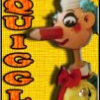-
Must Read SKF Articles
-
Posts
-
By sdlTBfanUK · Posted
Time for another update! The PH this morning is 6 and KH 0-1 (you can't measure zero obviously). I plan to check everything tomorrow and then a water change on satuday. At the moment the TDS is 190 which should drop to 170 after a water change and then 150ish after the following/next weeks water change. Last time I checked GH it was 6, but again I will do ALL the tests tomorrow. I had to resort to using a PH/KH- product (AQUACID) to get to where these parameters are now but as the water I use has PH6, GH0 and KH0 I assume/hope I won't need to use that from here on, but will see if the parameters stay stable for the next week and have a PH alert disc in the tank which should indicate any significant change. I don't like using these sort of products as a general rule and wouldn't if there were any shrimps in situ and that product has raised the TDS at about .5TDS per drop. I may well order some blue bolts towards the end of next week (the road to the house will be closed for a month from 3rd June so it is next week or wait another 6 weeks) and see how that goes. I plan to drip acclimate them overnight this time so as to not rush that as it shouldn't get cold indoors overnight anyway this time of year. This all depends on the tank parameters staying stable for the next week (aside from the mentioned TDS adjustments with the water changes), though the GH may drop a tiny bit with using just RO to reduce the TDS but that is fine, and even could be a bonus. I did manage to find some nice floating plant that I had before (good old ebay), and will try and get a photo of that at some point to attach, Azolla red I think it is called? Anyway, keeping my fingers crossed for now but all appears to be going well at this point! Snails seem to be doing well at least. -
By beanbag · Posted
That shrimp itself survived the molt just fine, but left about half dozen eggs still in the shell. I haven't measured KH in a really long time, but assume it is zero since I don't have any rocks besides a few small pieces of lava rock. Maybe you have unwanted rocks in your tank? My tank is the "long" style which I really like because I have a HMF on one end, and a pump outlet spout that shoots water all the way to the other end. I have no idea how many shimp it can support because I don't really understand waste management in a tank. Shrimp poop eventually turns into mulm, but then what? -
-
By sdlTBfanUK · Posted
Just in case someone may be looking for the SL Aqua it is available from this UK website at time of this post, https://gbeeshrimp.co.uk/product/z1/ -
By sdlTBfanUK · Posted
Thats a great photo, beautiful blue bolt, I hope it survived the molt without dropping the eggs! I think I can just about see some black dots (eyes) on the central egg but can't be 100% sure. I used to (and plan to again) do weekly water change of 10-15% but if you do too large or quick (not drip in new water) that would likely trigger a molt. What KH are they in, my new setup is sitting at (and refusing to budge) KH 3 and PH 7.5 so I may have to settle for neocaridina shrimp this time as opposed to the caridina I want, though not looking/deciding just yet, give the tank a bit more of a run in! Tap water here starts at kH 14, tds 320, when filtered goes to KH 0 and PH 6 but when put in the tank keeps going to KH3 and PH 7.5 despite 3 x 50% water changes???? You may be at 'maximum capacity' with only 20L tank especially if the tank is a cube type rather than shallow type?
-


Recommended Posts
Create an account or sign in to comment
You need to be a member in order to leave a comment
Create an account
Sign up for a new account in our community. It's easy!
Register a new accountSign in
Already have an account? Sign in here.
Sign In Now